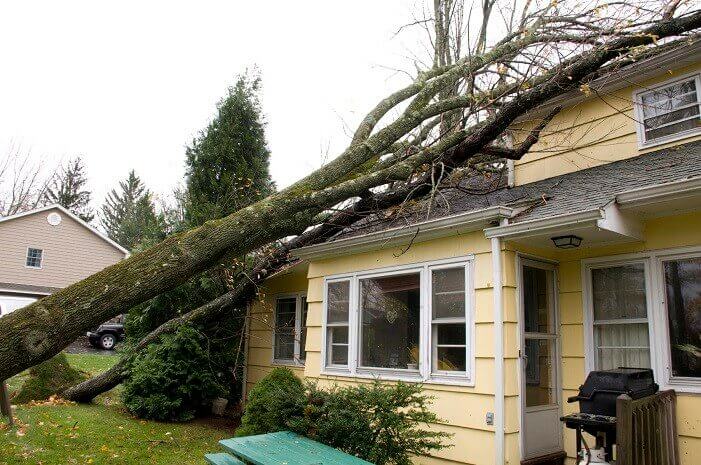Life without trees…can you imagine how bleak that might be? Trees have so much to offer us, from shade to beauty, from fruit to feed us to protection from the wind. However, for all they offer, they can also pose a threat to homes—a very serious threat.
Here in the Pacific Northwest, we have a lot of trees as well as a lot of rain (leading to saturated ground) plus the occasional rip roarin’ windstorm. All of these factors lead to falling trees. In fact, falling trees are so common that everyone living in this region has probably either had a tree or huge branch fall on their house or knows someone who has. And falling trees can do more than damage property: They can kill.
Not to imply those of us living in the Pacific Northwet (as I like to call it) have a monopoly on falling trees! They can happen almost anywhere in the U.S. And that’s why autumn is a good time to assess your tree situation to ensure it’s as safe as it can be. Fall weather can be nasty enough, and winter weather is fast approaching. Any trees already vulnerable or weak should be spotted and dealt with before the rains and winds arrive in full force.
Learn what to watch for
Once you’ve invested in your home security system, you’ve put into place all of the security and safety precautions we suggest in this blog, and you’re practicing commonsense safety, you certainly don’t want to think you’re still vulnerable by looking up at a huge hemlock and realizing it could crush the southwest corner of your home. But chopping down all the trees within range of your house is not the answer.
So what’s a smart, savvy homeowner to do? Take your trees to task! OK, not really, because you can’t; they’re inanimate. You can, however, inspect those trees for signs that they pose a threat. It’s easy to take our trees for granted, noticing only when they are leafing out or dropping needles. Taking a little time to take a closer look, however, can pay home safety dividends if you learn what to look for as a warning sign that a tree might be at risk.
You’ll find good advice from a certified arborist in this article titled “How to Spot a Dangerous Tree.” The author covers tips for inspecting your trees from the ground up, starting with the root system and up into the branches. It seems there is plenty we can watch for to know the health of our trees!
Hire a professional
If you’re unsure about doing the inspection and assessment yourself, hiring a certified arborist is another way to assess the health (and therefore risk) of your tall trees. Beware the “arborist” whose only advice is to cut down a tree, however. Find a professional whose first order of business is to see about saving the tree. The International Society of Arboriculture offers a tool to help you find an arborist in your area, and you have to love the name of their website: www.treesaregood.org!
Hiring a professional means getting an informed assessment of your tree’s health. However, it also means getting the correct maintenance done (if it’s needed), or at least guidance if you’re the one doing the maintenace. A certified arborist is trained in the care and maintenance of trees, not just the cutting down of.
Granted the only sure way to prevent a tree from falling on your house is to cut it down, because Mother Nature will have her way and there are no guarantees that you can prevent her from having her way during a major windstorm or downpour. You can, however, gain some peace of mind by assessing the state of your trees and spotting problematic ones before winter weather hits.

